DepthReading
A history wrapped in pure silk
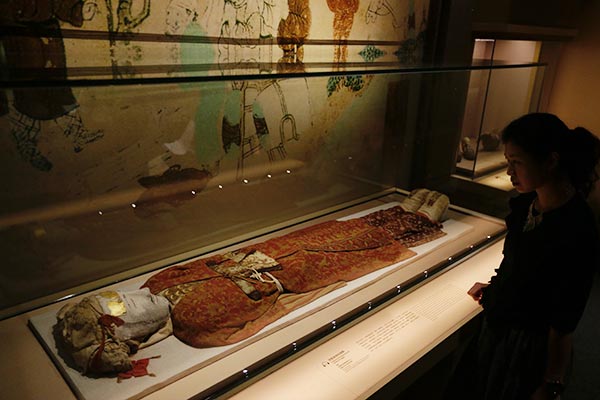
In 53 BC Marcus Licinius Crassus, a Roman general and politician who once acted as a consul for the Roman Republic, was fighting troops of the Parthian Empire near the town of Carrhae (now Harran, Turkey).
In the heat of battle the Parthians are said to have produced a military flag made of Chinese silk that, under the glaring sun, blazed resplendently. Dazed by a luminance they had never seen before, the Romans panicked and were eventually defeated.
The story is an old one, says the Chinese historian and archaeologist Sun Ji. "Bearing in mind that the Battle of Carrhae represented one of the most crushing defeats in ancient Roman history, the authenticity of the story will probably never be ascertained," he wrote in an article for the catalog of a Silk Road exhibition held in Henan Provincial Museum.
The story is just one of many about Chinese silk, a famous product once transported on a transcontinental route known today as the Silk Road.
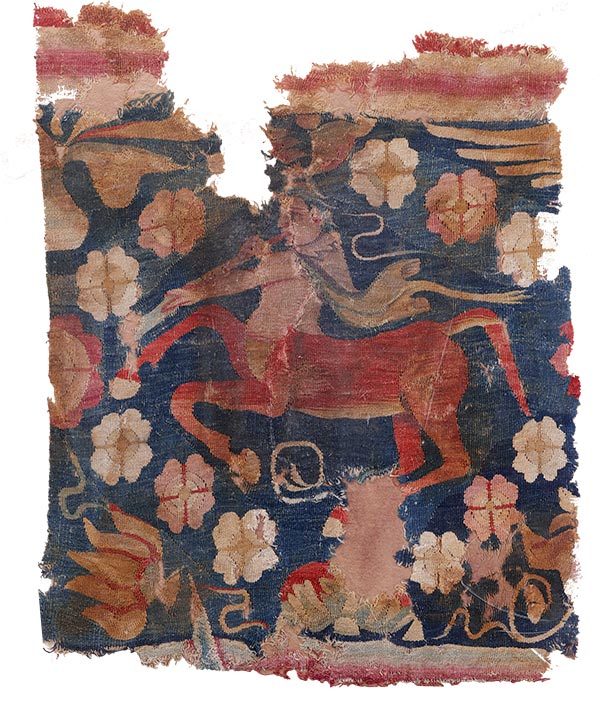
"The term Silk Road was coined at the end of the 19th century by the German geologist and Orientalist Ferdinand von Richthofen, who between 1868 and 1872 did extensive research in China," says Zhao Feng, director at the China National Silk Museum in Hangzhou, Zhejiang province.
"Over the years people were tempted to call the road by other names - spice and jade for example, given that they were important commodities traded along the same route. But none of them amount to a serious challenge, for a reason," says Zhao who was also behind a previous exhibition at his museum titled Silks from the Silk Road.
Zhao pointed to a gilt bronze silkworm unearthed from Shaanxi province, whose capital, Xi'an, once served as the capital for a large part of the country's Han Dynasty (206 BC-AD 220). The city was also located at the starting section of the Silk Road, first opened during the reign of the Han emperor Wudi between 139 BC and 126 BC.
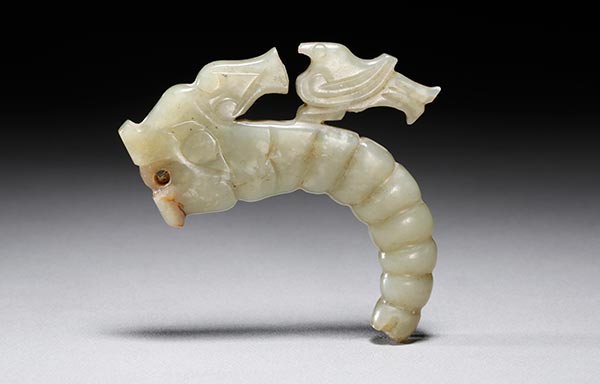
The worm is a mere 5.4 centimeters long. Its body is divided into nine segments, and it includes forelegs as well as middle and hind legs. Both its taut body and the slightly raised head are clear indications that the worm is in the process of spitting silk. It has been dated to the Han Dynasty.
"The level of realism achieved by the artisan responsible for the bronze silkworm is almost startling," Zhao says. "It testifies not only to the consummate craftsmanship, which could only be achieved through repeated rendering of the same image, but also to the emblematic status the tiny worm commanded at the time."
That would be the case for many years to come.
The Han government ran large workshops, some located right inside the imperial palaces in Xi'an, that could engage thousands of weavers, Zhao says.
These weavers, mostly female, could produce silk fabrics whose brilliant color schemes and sophisticated patterns can still be glimpsed from what has been unearthed during archaeological excavations along the Silk Road. (It is also worth noting that the weaving ladies must have enjoyed a relatively high social status compared with other craftspeople, since some - for example, Lady Bo, the birth mother of Emperor Wendi (203-157 BC) - were later handpicked to become the concubines and consorts for the Han rulers and their sons.)
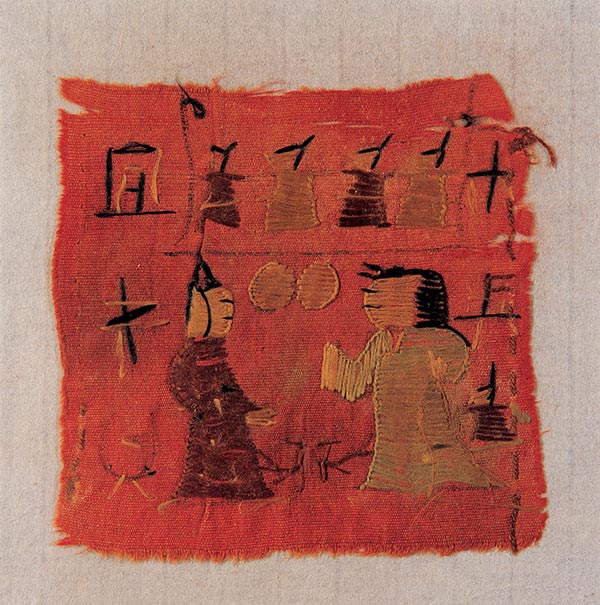
Paralleling this fast development of the State-sponsored textile industry was the appearance of silk on the extended trade route which, after nearly two millennia, would be named after it. It also fueled a craving for the brilliant fabric that has proven enduring. (Coins discovered in a tomb in Shaanxi that were minted by the Byzantine emperor Justinian I (483-565) are linked with the Byzantine purchase of Chinese silk.)
One typical image born out of this craving involves that of a camel. Pottery renditions of the pack animal have turned up in large quantities in ancient tomb sites along the route, from Xi'an all the way to what is today Xinjiang Uygur autonomous region in China's far west, bordering Kazakhstan, Kyrgyzstan and Tajikistan. The area, part of what is known as Xiyu, or the western regions, is traversed by the Silk Road, the route for every caravan that traveled between the Chinese Empire and the Eurasian countries in Central Asia and around the Mediterranean.
"The few things you would usually find on the back of a camel is a wineskin or water flask, a Central Asian-style musical instrument for plucking and a pair of sacks loaded with thick rolls of fabric or locks of raw silk," Zhao says.
"Silk became the No 1 merchandise on the Silk Road partly because it is light in weight, so is easy to carry in relatively large quantities. Its warm reception by people far and wide not only yielded vast profits for the middlemen - mostly Sogdian merchants who routinely sold the much sought-after commodity at a price a hundred times higher than its initial purchasing cost - but also made silk the de facto hard currency on the trading route.
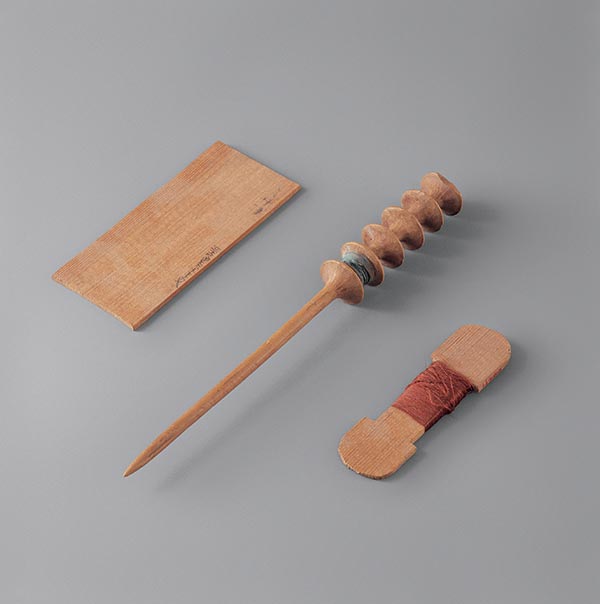
Rong Xinjiang, one of China's leading researchers on the ancient Silk Road, says that during the fifth century in Gaochang, a small agricultural kingdom sitting inside the Turpan Depression in eastern Xinjiang, household taxation was imposed in the form of silk.
"This is a strong indicator that by that time the area was already able to produce its own silk," he said. "Although major silk-producing centers were still located in the Chinese heartland more than a thousand kilometers further east, the string of countries and communities along the Silk Road had definitely picked up one loose thread or two and started weaving their own silk story, informed by the rich indigenous culture."
Legends abound regarding the westward transmission of sericulture and silk fabric making techniques. One appeared in the Records of Xiyu During The Time of Tang, a twelve-volume travelogue reputed to have been dictated by Xuanzang, a Buddhist monk, who, in his quest for religious scriptures, traveled all the way from Xi'an to India and then back between 628 and 645. Most of his journey was along the Silk Road, which throughout its history had been a major conduit for the spread of religion.
"According to Xuanzang's book, the ruler of a Xiyu kingdom sent an envoy to ask for silkworm eggs from 'the country in the east' but was refused," Zhao said. "Undeterred, the king proposed to marry a princess from that country. This time, he was given the nod. The bride was then secretly told by the envoy that the land she would be marrying into had no silkworm. 'Bring some so that we can make your own clothes there,' the princess was told, and obliged, without the knowledge of her emperor. The secret was no more.
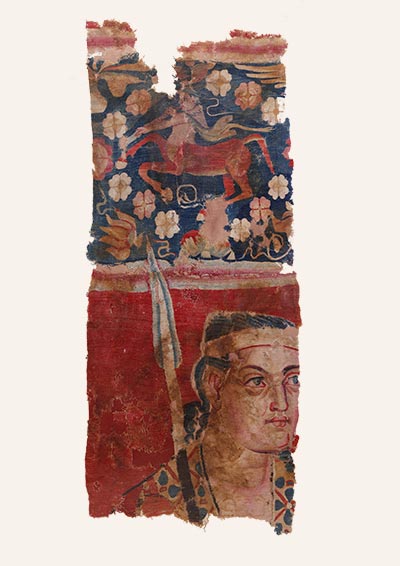
"No date is given to the story, but we have reason to believe that 'the country in the east' refers to China, known to the ancient Greek and Roman geographers as 'Serica', the country equated with sericulture."
Judging by archaeological excavations, the method for raising silkworm had reached Xiyu by the third century. In one case, Han-Dynasty wooden bobbins unearthed in the area were still wrapped around with gray and ocher-colored thread, emanating silken light after 1,800 years under the ground.
It is believed that Nestorian Christian monks were sent by the Byzantine Emperor Justinian I as spies on the Silk Road from Constantinople to China to steal the silkworm eggs, resulting in silk production in the Mediterranean.
However, the idea of sericulture as a heavily guarded secret has always been debated. Sun Ji, a Chinese historian and archaeologist, believes that the Chinese government in ancient times rarely did anything to prevent the leaking-out of silk-making methods but, rather, had pushed for their dissemination.
"The main aim of the Chinese rulers in their efforts to reach out through the Silk Road was always to demonstrate the strength and greatness of their empires. Acting in a shortsighted and self-interested way would only have undermined this goal."
Even if they did, the fact that silk-producing was being carried out nationwide would have made it virtually impossible to keep the secret within the country's porous borders.
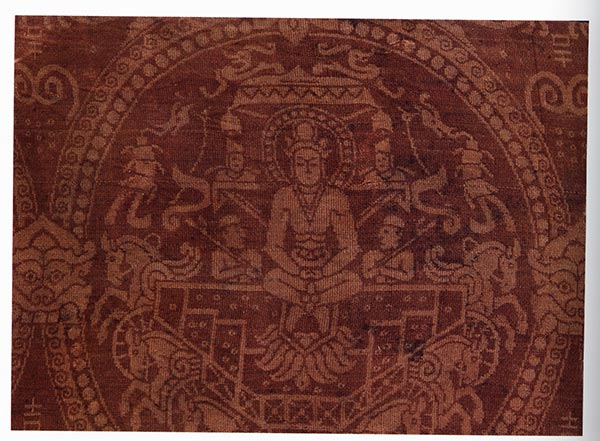
Meanwhile, the gradual adoption of sericulture along the Silk Road did very little to hurt the reputation of Chinese silk. In fact, often the reverse was true.
"The high-quality Chinese silk was still able to set it apart from and above similar products made elsewhere," says Rong the historian.
"In a letter from the 10th century, a prince from a Xiyu country named Hva Pa-kyau pleaded with his mother the queen for more locally produced jade, to be used in his exchange for Chinese silk. This was seven centuries after sericulture's first arrival in Xiyu."
Artistic exchanges happened in due time, and the silk fabrics provided the perfect canvass for them. A tapestry unearthed in Xinjiang and dated to the Han Dynasty (206 BC-AD 220) features a centaur that seems to have charged directly out of Greek mythology. In another case, a piece of silk brocade, also from Xinjiang and dated to the era of Tang (618-907), is decorated with grapevines and pairs of facing roosters and rams. While the facing animals constitute a signature decorative motif of Sasanian Persia, the grapevines are believed to have been growing in the abundant sunshine of the Mediterranean, before finding another home in Xinjiang, where they took root both in the sun-drenched soil and in local art.
Yet the most telling example is a silk banner unearthed from neighboring Qinghai province. Believed to have come from between the fourth and sixth century, the banner has on it the horse-drawn chariot riding Grecian sun god Helio. But this Helio, during his eastward journey along the Silk Road, must have been subject to a heady mix of cultural influences. As a result, his seated position is that of the Buddha, legs crossed, on a lotus blossom. The way the silk was woven is unmistakably Chinese.
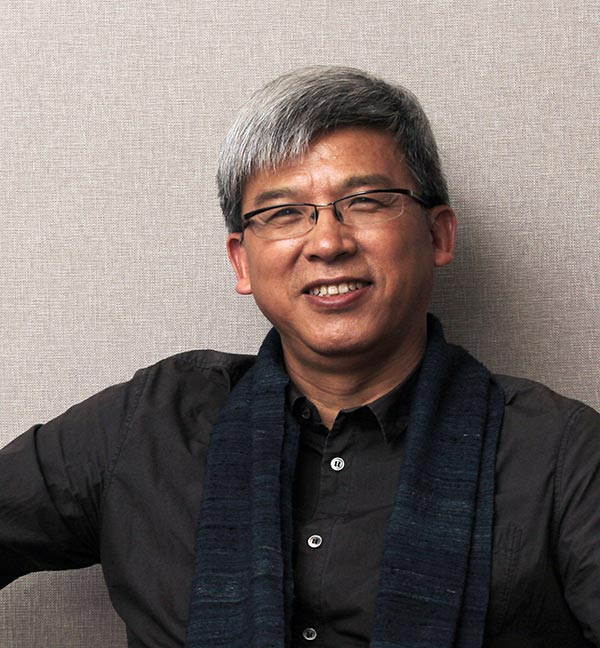
When Julius Caesar (100-44 BC), the legendary Roman general and a contemporary of Crassus, turned up at a theater draped in splendid Chinese silk, the would-be autocrat caused a big stir. The longing for the luminous fabric was such that the Roman senate later issued, in vain, several edicts to prohibit the wearing of silk, on the grounds that the importation of Chinese silk had caused a huge outflow of gold.
There were also moral considerations, as voiced by the Roman philosopher and dramatist Seneca the Younger (4 BC-AD 65). With women wearing transparent silk, "her husband has no more acquaintance than any outsider or foreigner with his wife's body," the man is believed to have said - well before the age of feminism.
What Caesar and Seneca would never have guessed is that the whole silk culture in China had long taken on a deeper dimension that is more spiritual than material, one that is best embodied by the image of a silkworm.
"For Chinese, the metamorphosis a silkworm goes through during different stages of life, and the way it breaks free of the cocoon, transformed, is allegorical," Zhao says.
"The worm, often rendered in jade or precious metals, were buried underground with our ancestors. There, it is supposed to bestow upon the dead the same transformative power, and to guide them into the world of eternity, with their magic, glistening thread.
A jade pendant discovered in Henan province and dated to nearly three millennia ago is carved in the shape of a silkworm. But its head is that of a dragon, of which the Chinese consider themselves descendants.
A line in a book penned by the Chinese philosopher Guan Zhong (723-645 BC) says: "When the dragon wishes to be small it morphs into a silkworm. Yet when it wants to be big, it can fill the entire universe."
Category: English
DepthReading
Key words:
